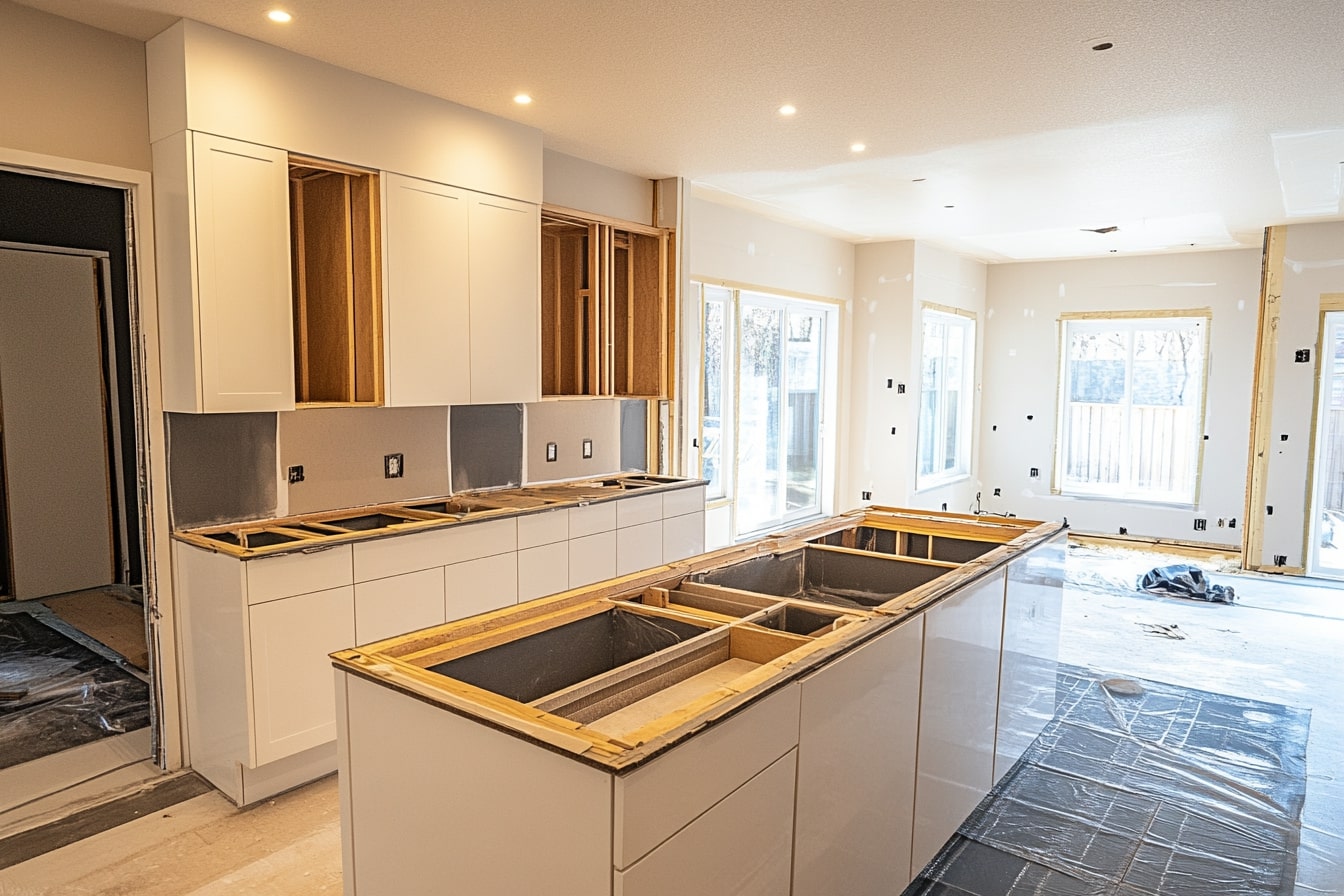Kitchen Remodel Guide: Plan, Design & Costs
Thinking about a kitchen remodel? This practical guide walks you through planning, design trends, storage solutions, appliance selection, and realistic cost ranges to help you renovate with confidence. Learn how to set a budget, choose cabinets and countertops, optimize storage, and pick the right appliances to create a functional, stylish kitchen that fits your lifestyle and increases home value.

Kitchen Remodel Guide: Plan, Design & Costs
A well-executed kitchen renovation can dramatically improve how you use your home and increase its market value. Whether your goal is to modernize appliances, improve traffic flow, or create a welcoming spot for family time, thoughtful planning and informed choices will get you there. This guide breaks the process into clear steps—from initial planning and current design trends to storage strategies, appliance selection, and budget expectations.
Planning your kitchen renovation
Start by taking stock of how you actually use the space. Note what works, what frustrates you, and which changes would make the biggest day-to-day impact. Make two lists: must-haves and nice-to-haves. Next, set a realistic budget that covers materials, labor, permits, and a contingency for surprises—typically 10 to 20 percent of the project cost.
Collect visual inspiration from magazines, online galleries, and showrooms. A mood board or a digital collage can help clarify style, color palettes, and finishes. Decide if you want to hire a designer or manage the project yourself; designers can add up-front cost but often save time and reduce costly mistakes.
If you engage contractors, get at least three written estimates, verify references, and confirm licenses and insurance. Build a project timeline that anticipates delays—kitchen renovations commonly take several weeks to a few months depending on complexity and lead times for custom elements.
Cabinet and countertop trends to consider
Cabinetry and countertops define the room’s look and usability. Recent trends favor streamlined, functional designs with subtle visual interest:
- Classic door styles like shaker remain popular for their versatility and timeless appeal.
- Two-tone cabinets, with lighter uppers and darker bases, add depth without overwhelming the room.
- Open shelving breaks up solid runs of cabinetry and offers an opportunity to display curated dishware.
- Built-in storage features such as pull-out pantries, deep drawers, vertical dividers, and appliance garages prioritize usability.
For countertops, durability and easy upkeep are major priorities:
- Quartz is favored for its stain and scratch resistance and low maintenance.
- Granite provides unique natural patterns and strong heat tolerance.
- Butcher block brings warmth and can be refinished, ideal for prep areas.
- Porcelain slabs offer a sleek, contemporary look and resist staining and heat.
Choose materials that balance aesthetics, maintenance, and budget to match how you cook and entertain.
Maximizing storage and workflow
Smart storage makes a kitchen feel larger and keeps essentials within reach. Consider these strategies:
- Extend cabinets to the ceiling to capture vertical storage and reduce dust on top surfaces.
- Add a walk-in pantry or a butler’s pantry if space allows to offload bulk items and small appliances.
- Use drawer organizers, spice inserts, and utensil dividers to keep drawers efficient.
- Convert corner spaces into lazy Susans or corner pull-out systems to eliminate dead zones.
- Design the island with deep drawers, appliance garages, or open shelving for frequently used items and seating.
- Use the space above cabinets for seasonal storage or decorative baskets.
Tailor storage solutions to your routine; a baking enthusiast might prefer a dedicated baking center with pull-out trays and an appliance lift for mixers.
Choosing appliances that fit your life
Appliances should support how you live in the kitchen while aligning with your design. Key considerations include:
- Energy efficiency: Look for ENERGY STAR models to reduce long-term utility bills.
- Size and capacity: Measure carefully to ensure every appliance fits and serves your household needs.
- Features: Prioritize functions you will use—convection, steam ovens, flexible burners, or quiet dishwashers.
- Finish and integration: Match finishes for a cohesive look or choose panel-ready units for a seamless built-in appearance.
- Smart capabilities: Wi-Fi enabled appliances offer convenience but weigh whether the features will be used long-term.
When laying out appliances, aim for an ergonomic work triangle between sink, stove, and refrigerator to streamline meal prep and cleanup.
Typical cost ranges and budgeting
Below is a general pricing guide to help you set expectations. Actual costs vary by location, scope, and material choices.
| Remodel Type | What it Includes | Typical Cost Range |
|---|---|---|
| Minor Remodel | Cosmetic updates, no layout changes | $10,000 - $30,000 |
| Midrange Remodel | New cabinets, countertops, appliances | $30,000 - $60,000 |
| Major Remodel | High-end materials, layout changes | $60,000 - $100,000+ |
Prices, rates, or cost estimates mentioned in this article are based on the latest available information but may change over time. Independent research is advised before making financial decisions.
Final tips for a successful remodel
A kitchen renovation is a significant investment that can boost daily enjoyment and resale value. Balance your dream features with what provides the best return and function. Prioritize durable finishes in high-use areas, plan storage around your habits, and allow buffer time and money for the unexpected. When in doubt, consult experienced designers or contractors to translate your vision into a practical plan. With careful preparation and the right team, your renovated kitchen can become a beautiful, highly functional heart of the home for years to come.






